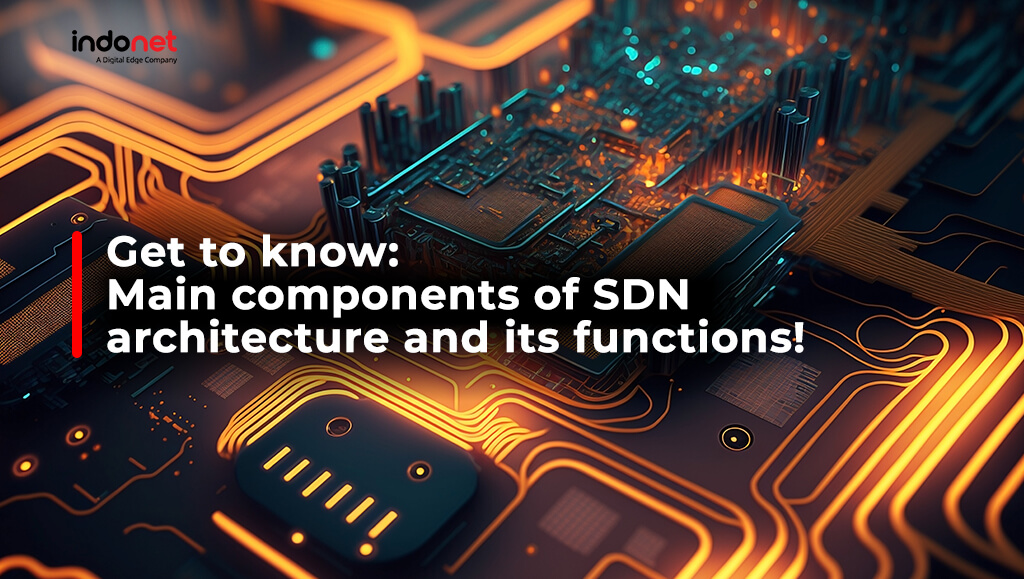There have been a lot of new, crucial components added to the digital world in its development. SDN, or software-defined network, is one of them. SDN improves network efficiency and facilitates management of the network itself. As such, it is critical to understand the fundamental elements of the SDN architecture.
SDN is a new network architecture that is dynamic, adaptable and easy to manage. With this architecture, network engineers or network administrators can shape network traffic through the central console. So, to make it clearer, let’s look at the explanation of the meaning, main components and functionality of SDN through the following review.
What is a Software Defined Network?
Before we’re digging into the components in it and the accompanying functions, you must know what SDN is. Software Defined Network or SDN is a technology that changes the way internet networks are configured, managed and monitored.
So, here SDN will separate the data plane and control plane on the network. This is needed so network engineers or network administrators will not need to configure each switch or device in the topology.
The control plane is a part of the network that is useful for controlling processes. Meanwhile, the data plane is the part that functions to carry or send the actual data packets.
The main function of using SDN is to facilitate network setup and management. Apart from that, SDN will also make it easier for you to control the network when changes occur in business requirements.
Another thing you should also know is that SDN is a software or API-based network controller. So to communicate and direct traffic on the network you need infrastructure in the form of hardware.
3 Main Components of SDN Architecture
The basic concept in Software Defined Network is the separation between control plane and forwarding or data plane. So in this concept there will be an open interface that will allow software or applications to control connectivity.
Well, this connectivity is provided by network resources that control the traffic that passes through it and inspect or modify that traffic. So that you are not confused, below we provide a general overview of the main components of the SDN architecture which consists of 3 layers.
- Application Layer
At the application layer you will find systems such as intrusion detection, load balancing, and firewalls. This is different from traditional networks which require additional tools to add these features.
In the SDN architecture, you can manage the data plane just by using the controller. The main function of the application layer is to carry out security settings, network management and routing.
Apart from that, the application layer can also be programmed to make various network decisions and regulate the flow of data. This layer is located at the top and communicates using the NorthBound Interface (NBI) system.
- Control Layers
The second layer that you can find in the main components of the SDN architecture is the control layer. This layer is the middle part which is useful as the brain of the available tissue. At this layer the SDN controller will translate requirements between applications and infrastructure.
This translation process occurs by providing instructions that are in accordance with SDN Datapath and relevant to the SDN application. All of these devices can later be connected to the controller via a protocol known as OpenFlow.
You need to know that the condition for the controller to be able to connect to the device completely is that the device must support OpenFlow. When OpenFlow is active, the data plane and control plane will separate automatically.
But remember, don’t confuse Software Defined Networking with OpenFlow. This is because OpenFlow is one of the components that builds and is part of SDN.
- Infrastructure Layer
The final component contained in the Software Defined Network is the infrastructure layer. This layer is a network that is useful for handling packet data flows. The infrastructure layer consists of network elements that manage the SDN Datapath according to instructions from the Control-Data-Plane-Interface or CDPI.
The infrastructure layer consists of various data hardware such as routers, switches, APs, and so on. These various devices are useful for making decisions about how packet data should flow through the network. So, to build SDN, the condition here is that the device used supports OpenFlow.
Later this control layer will become a controller where all devices will be controlled centrally here. On the screen several controllers will appear such as opendaylight, HP VAN, floodlight, pox, nox, and ryu.
In every Software Defined Network architecture you will find the three components above. If one of the layers or components above is not present, then SDN will not function properly.
Software Defined Network (SDN) Architecture Functions
Finally, we will also discuss the functions of Software Defined Network on the internet network. This will be very useful, especially for those of you who previously had no idea what SDN was. Here are 4 SDN functionalities that you must know.
- Simplifies Network Setup and Maintenance
The most important function of a Software Defined Network or SDN is to simplify network setup and maintenance. Here you can manage and maintain the network in an integrated view. Simply put, you can do these 2 activities in a centralized, easy and fast manner.
- Predicting Network Problems
Furthermore, SDN is also useful for predicting network problems before the problem occurs. This is because SDN has applications that can analyze networks. This analysis will help you estimate what problems can or will occur on the network in general.
- Accelerate Network Development or Additions
The third function of the SDN architecture is to speed up the process of building or adding networks. You need to know that Software Defined Network will facilitate the process of designing, preparing and implementing devices when building or adding a network.
- Reducing Expenditure Costs
Compared to using traditional networks, SDN can help you reduce costs more. This is because setup and maintenance will occur centrally. So network performance will increase while maintenance time will be shorter.
With the various functions that SDN has, of course your company will be greatly helped and will definitely benefit. Even so, this might be a little difficult for those of you who are just getting to know SDN. For those of you who want to develop a series of company digital infrastructure, just contact Indonet.
Indonet has a solution to optimize your business potential with connectivity to various world-class cloud providers, named Cloud Exchange. Cloud Exchange provides effective digital infrastructure solutions to help your company achieve digital transformation.
By using Indonet services you can more easily automate the entire data center connectivity ecosystem, including the main components of the SDN architecture.

